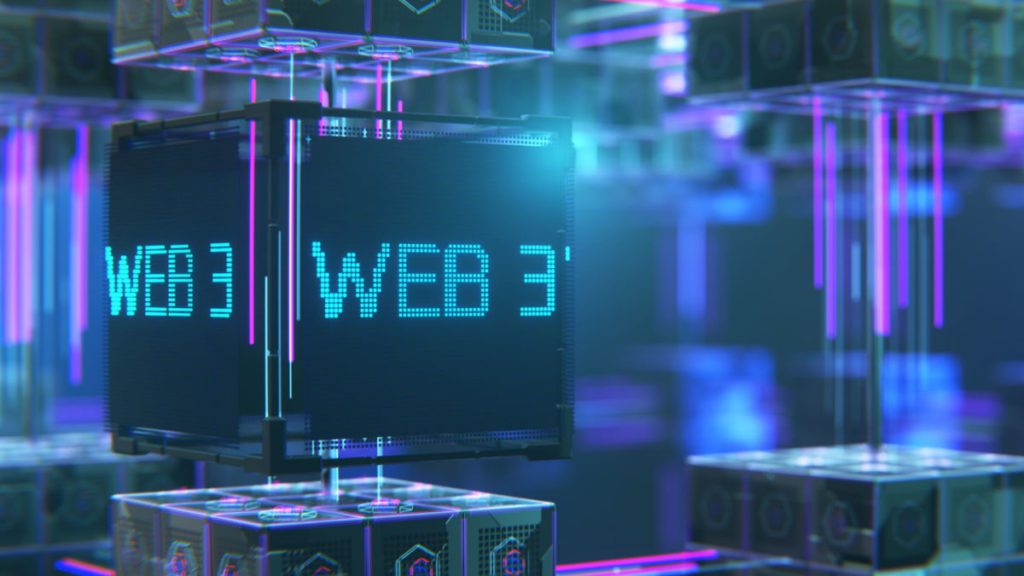Looking back at the Cloud Wars Expo earlier this year, one of the sessions that stood out to me above all was a panel called “Metaverse Business Models.” My colleague Kieron Allen hosted the panel, which included blockchain thought leaders Anoop Nannra, Michael Anderson, and Jason Yanowitz. Despite the session topic, the conversation naturally veered towards blockchain and so-called Web3, the term ascribed to the next decentralized iteration of the internet that many believe will replace the corporate-controlled system we have today. While I highly recommend watching the full on-demand stream, it’s also nice to have a written summary and in-depth analysis of some of the ideas raised during the session.
3 Pillars of the Web3 Revolution
Three things are happening when we talk about the Web3 revolution.
Pillar 1: The Innovator’s Dilemma
First, it’s a classic case of the Innovator’s Dilemma, a framework outlined in Clayton Christensen’s famous book of the same name. The core idea is that emerging technologies perform worse than established technologies in almost every metric, except one or two. However, these one or two exceptions cater to a new market unreachable by established solutions. Coupled with fast improvement that can’t be matched by maturing technologies, these emerging solutions always overtake their established counterparts.
This pattern has happened in the computer industry, for example. In their early days, home computers were expensive for individuals, slower, and had less memory than mainframes. But they could be placed on a desk at home. IBM and a few other companies recognized this and survived the PC revolution.
The same is unfolding in the database industry today. Existing centralized databases and web services are better than blockchains in almost every way, from efficiency to cost to flexibility. However, they aren’t stateless and trustless. While this seems like a negligible advantage, it has positioned blockchain as the best backbone for small markets such as digital art and digital currencies. As we already know, they are also improving rapidly.
As Christensen pointed out, this growth trajectory will overtake existing technologies and blockchain will be applied to more industries, just as PCs became more useful as they improved.
Pillar 2: The Token
The second pillar of the Web3 revolution is the introduction of a new capital asset, the token. Aside from the obvious example of cryptocurrencies, digital tokens powered by blockchain are rapidly becoming a backbone of the digital economy. They help manage ownership of digital assets (typically in the form of ERC721 NFTs), they can regulate the governance of digital communities, they can provide funding to early stage projects, and much more.
Pillar 3: DAOs
The third major element of Web3, according to the panelists, is a new organizational structure known as the decentralized autonomous organization, or DAO. These are digital-first communities dedicated to a mission or cause whose governance and incentive structure is regulated by tokens.
Michael Anderson was particularly bullish on the DAO, predicting that within the next two decades, one third of global GDP will run through DAOs as they slowly erode the established in-person corporate structure. Both Anderson and Yanowitz pointed out that they know talented developers working for multiple DAOs at the same time, earning more than they would as traditional employees at major tech companies.
In this meritocratic talent pool, skill trumps all of the factors that typically determine your career success, such as where you went to school, where you live, and even your age and physical appearance.
The Trajectory of Web3
Web3 will follow the trajectory of any other emerging tech industry. The first iteration of infrastructure gives rise to an equally primitive first application layer: Ethereum’s ETH version 1, running on proof-of-work, has given rise to many shoddy coins, simple NFTs, and a variety of smart contracts providing simple services. But as applications get better, infrastructure needs to grow with it.
We’re finally seeing the rollout of ETH 2, a much faster and sustainable version of ETH 1 relying instead on proof-of-stake. This improved infrastructure will again need better applications to fulfill its potential. The cycle repeats.
Final Thoughts
The panel closed with an important final note. We tend to forget that Web3 has to be user-focused, and that right now, core blockchain users are still developers. Many of the workflows and tools are still too hard to use for non-developers. Additionally, improving the UX is key in changing the user demographic and propelling the industry forward. This is the next important step in how this story unfolds and will create billions of dollars in value.
Want to compete in the Metaverse? Subscribe to the My Metaverse Minute Channel:










